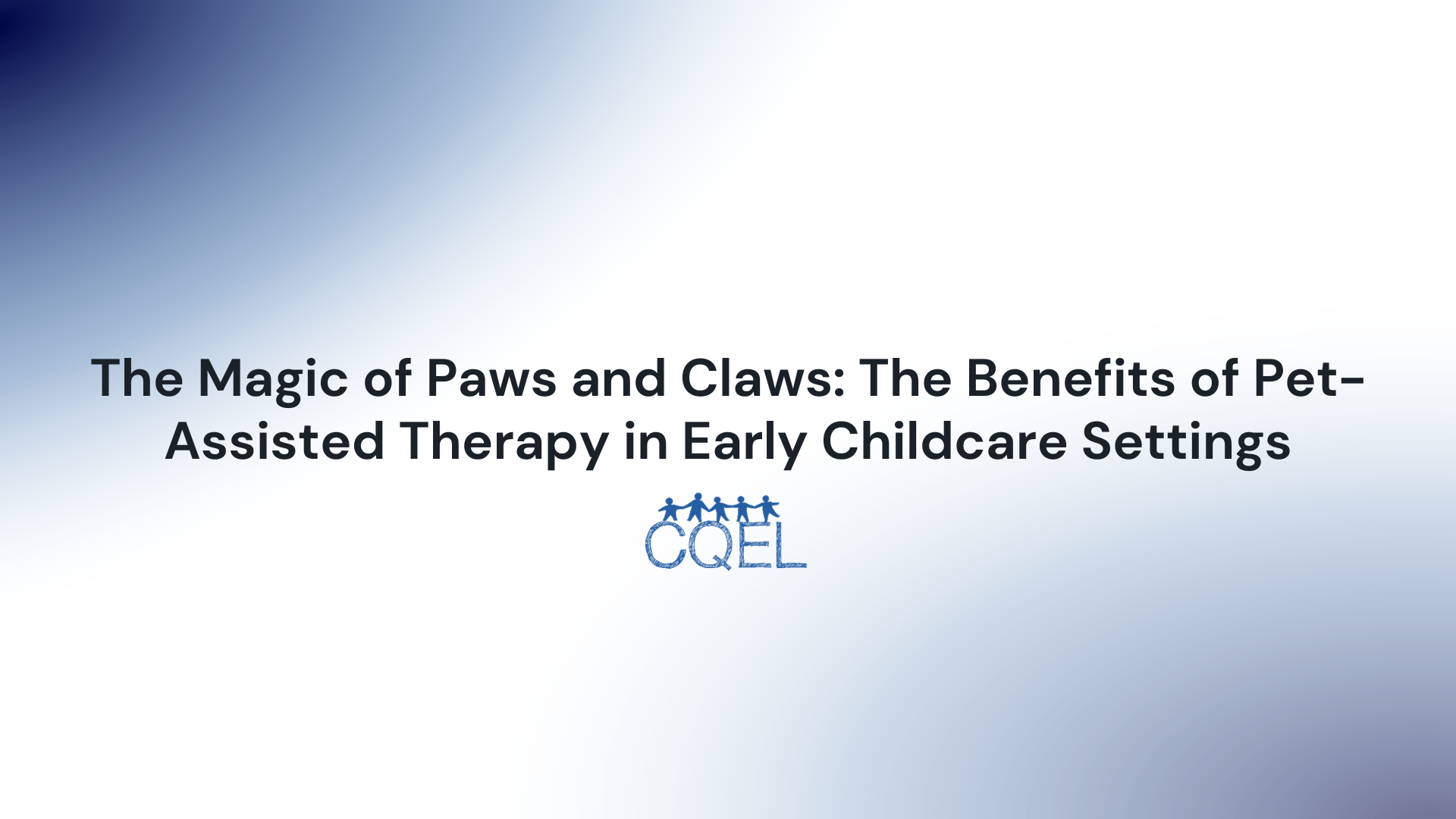The Magic of Paws and Claws: The Benefits of Pet-Assisted Therapy in Early Childcare Settings
In this post, we will delve into the fascinating world of pet-assisted therapy and how it can enrich the learning environment for children in early childcare settings.

The incorporation of therapy animals into a myriad of settings has rapidly grown over the years. Early childcare settings stand out among these, as the interactions between children and animals can offer substantial benefits. We will delve into the fascinating world of pet-assisted therapy and how it can enrich the learning environment for children in early childcare settings.
Introduction to Pet-Assisted Therapy
Pet-Assisted Therapy (PAT), also referred to as Animal-Assisted Therapy, involves the use of animals as a form of therapeutic intervention. It's important to clarify that therapy animals are not service animals; instead, they are specially trained to provide psychological or physiological therapy to individuals. According to the American Humane Association, these interventions often aim to improve patients' social, emotional, or cognitive functioning.
Benefits of Pet-Assisted Therapy in Early Childcare Settings
The integration of PAT in early childcare settings can have far-reaching effects on a child's development. Here are a few benefits that underscore its importance:
- Emotional Development: Interacting with animals can create a sense of calm and relaxation in children, reducing their stress levels and promoting emotional well-being. The unconditional love and acceptance that animals offer can also boost a child's self-esteem.
- Social Skills: PAT can enhance a child's social skills, including empathy, communication, and cooperation. As children interact with pets, they learn to care for another being, respect boundaries, and communicate non-verbally.
- Cognitive Development: Animals can spark children's curiosity and creativity, which can support cognitive development. For example, children might learn about different animal species, their behaviors, and their care.
- Physical Health: Interacting with pets can promote physical activity, contributing to healthier lifestyles. Walking a dog or even grooming a pet can improve a child's motor skills and coordination.
Resources for Implementing Pet-Assisted Therapy
Several organizations can guide early childcare providers interested in implementing PAT:
- Pet Partners is a nonprofit dedicated to improving people’s health through positive interactions with therapy animals. They offer resources and training for individuals and institutions interested in PAT (link).
- The American Kennel Club has a therapy dog program and provides resources for those interested in how dogs can contribute to improving mental and emotional health (link).
- Therapy Dogs International is a volunteer organization that regulates, tests, and registers therapy dogs and their handlers for visiting institutions like schools (link).
Incorporating pet-assisted therapy in early childcare settings can offer multifaceted benefits to children. However, it's crucial to consider factors like allergies, fears, and the overall environment before introducing a therapy animal. With careful planning and execution, pets can contribute significantly to creating a vibrant and enriching learning environment.
